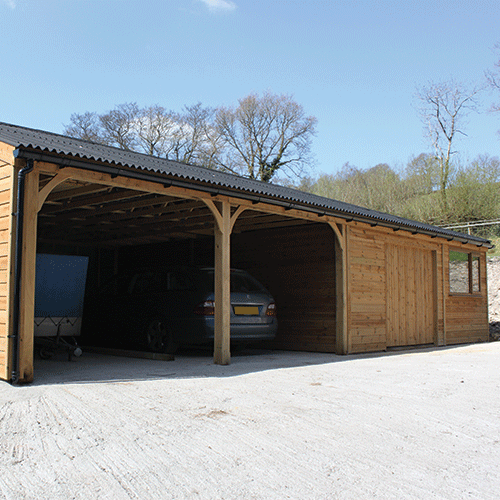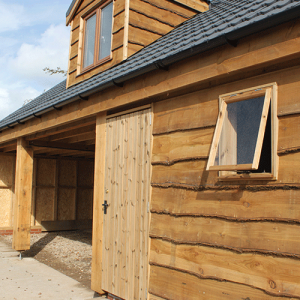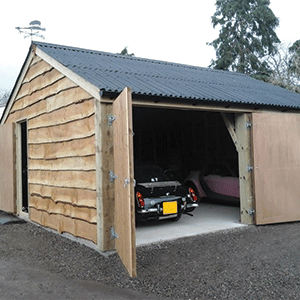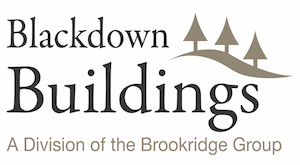
16 Jan Why Oak Is Such A Great Structural Material For Many Timber Buildings
Oak is used as part of the essential structure of many different timber buildings e.g., timber garages and timber barns. In this post, we look at some of the reasons why oak is still such a valued material for supporting larger timber buildings.
6 Main Reasons
As a Somerset timber buildings company we know the value of Oak as a construction material. Here are 6 keys reasons why oak is still such an important material in the construction of timber buildings.
- Strength: Oak is a strong and durable wood species. The strength of oak is due to its high density and strong cell struc
- ture, which gives it excellent resistance to bending and crushing.
- Durability: Oak is naturally resistant to decay and insects, making it a suitable choice for outdoor construction. The heartwood of oak (the older, inner part of the tree) is particularly resistant to rot, decay, and insects.
- Workability: Oak is relatively easy to work with, making it a popular choice for oak framed timber buildings and other traditional carpentry applications. It can be sawn, nailed, and joined with ease.
- Beauty: Oak is also valued for its rich, warm color and interesting grain pattern, which can add visual appeal to a building.
- Availability: Oak is a wide-spread tree that can be found in most of the temperate forest in Europe, North America and Asia.
- Aesthetics: Oak is popularly used in traditional carpentry and has a warm and welcoming aesthetic.
Given these properties, it’s no wonder that oak has been a popular choice for structural timber in buildings for centuries, and continues to be so today.

What About Finishes For Timber Buildings?
As a Somerset timber buildings supplier, we also know that there is a variety of timber finishes that work very well as timber cladding for both the exterior and interior of timber buildings. These are:
- Shiplap is a type of board that has a distinctive “rabbeted” edge that allows the boards to be fitted together tightly, creating a smooth and weathertight finish. It is often used as a cladding for buildings, as well as for interior walls and ceilings.
- Waney Edge (sometimes referred to as “live edge”) is a type of board that retains the natural edge of the tree from which it was cut. This creates a rustic and natural look and is often used for decorative purposes or to create a natural aesthetic in a building.
- Feather Edge is a type of board that is tapered on one edge, which allows it to overlap with the next board and create a smooth, weathertight finish. This type of board is often used for cladding and fencing, as well as in the construction of sheds and outbuildings:
- Timber stockwalling.
- Twin Tongue and Groove is similar to shiplap, but it has a tongue and groove on both the top and bottom edge of the board. This allows the boards to be fitted together even more tightly, creating an even smoother and more weathertight finish.
- Plywood and OSB (oriented strand board) are panel products made from wood flakes, particles, or veneers, that are pressed and glued together to form a sheet. These materials are typically used for floors, walls, and roofing in construction, as well as for making furniture, and other uses.
- Half Lap Internal is a type of joinery that is used to connect two pieces of timber. One piece of timber is cut away, creating a lap joint, which allows the two pieces to be fitted together tightly and securely. This type of joint is often used in the construction of timber frame buildings and is a traditional method of constructing timber frames.

Overall all of these finishes are used as solutions to different needs of the timber building, either for structural, aesthetic, or functional purposes. They all add a different look and feel to the building while protecting the timber and the structure itself.
Both the structural timbers and timber finishes play an important role and bring different strengths and qualities to the construction of great timber buildings.


Sorry, the comment form is closed at this time.